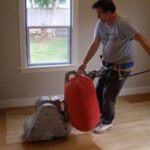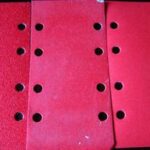Drywall is one of the most popular ways to cover the walls inside your home. Paying for a professional to install drywall can be expensive, but when you install drywall yourself you can significantly cut the cost.
Recommended Tools for Drywall Installation
Before beginning your drywall installation project you should have the following tools on hand: a wall board hammer, drywall screwdriver, wallboard saw, hand sander or sanding block, utility knife, tape measure and pencil, framing square or long metal straight edge, scissors, dust mask and two sawhorses. If you will be finishing the drywall seams yourself, you will also need joint knives, tape, drywall joint compound and drywall mixing tray.
The size of drywall most commonly used for diy drywall installation is 4-by-8 feet sheets that are 3/8-inch thick or ½-inch thick. Drywall screws appropriately sized for the thickness of drywall you are using and an electric drywall screwdriver also help speed the drywall installation process.
Steps for Installing Drywall
After a wall has been framed and insulation installed, you are ready to install drywall. It can be installed vertically or horizontally. According to Jay Cedarleaf in his guide Drywall for the Beginner there are advantages and disadvantages to each drywall installation method. Cedarleaf notes installing drywall vertically can be easier for one person to install and since the seam is supported by one stud, seams are often stronger. However this drywall installation method can be a challenge if wall studs are not straight.
Cedarleaf also notes installing drywall horizontally has fewer seams to fill and since the seams are at waist height they are easy to reach. However, since seams are only screwed every 16″ they are more prone to cracking.
Before installing drywall to the wall, lightly mark the center of the stud on the floor so you have a reference point for screwing it in place. Measure the wall section for drywall installation. Note any electrical outlets or light switches on the wall section you are working on. Measure and mark the drywall accordingly. Use a utility knife and framing square to score and cut.
Once cut to size, install drywall on the wall. Use drywall screws along the edge at 6 to 12 inch intervals, or at a distance required for drywall installation by your local building code. Be sure to leave about ½ inch space from the floor for drywall installation over a concrete floor to allow for space for flooring and to prevent moisture from the concrete from being absorbed by the drywall. This space will eventually be covered by trim.
How to Finish Drywall After Drywall Installation
After installing drywall, finish it off by spreading drywall compound across the joint with a drywall knife. Immediately place joint tape on the compound. Now apply additional joint compound over the tape to create a smooth joint. Make sure the surface is smooth for a nice looking drywall finish. Nail screw heads in further so they are lower than the drywall and cover with joint compound by using a drywall knife to smooth over the surface. One the compound has dried, the surface should be smooth and ready to paint.
Taping and mudding of drywall does take skill and practice, so make your first attempts in a less prominent location. Or when crunched for time, consider hiring a professional to come finish drywall for you.
Sources:
Ramsey, Dan, The Complete Idiot’s Guide to Finishing Your Basement Illustrated, New York, New York, The Penguin Group, 2003
Cedarleaf, Jay, Drywall for the Beginner, Palmer Lake, CO, Cedarleaf Products Company, 1983



